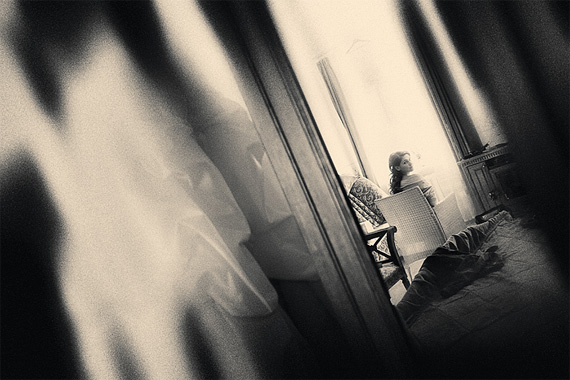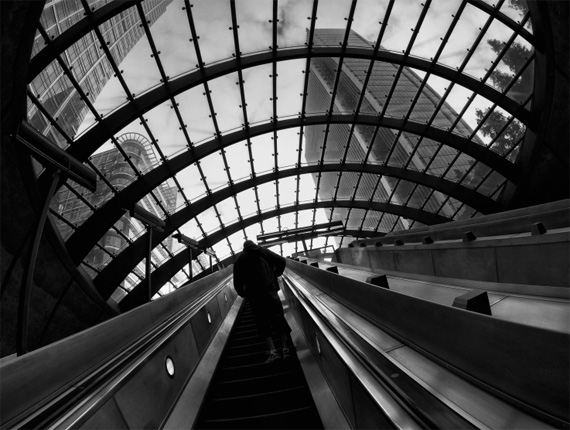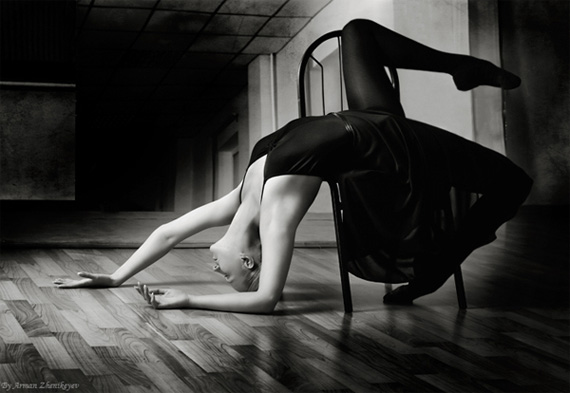Here are several tips to help you capture the best images in dark indoor settings.
1. Camera Stability. You will be taking long exposures, and any camera motion could impact the quality of the image. Try to utilize a monopod or stabilize the camera on the back of a seat. Do not hold the camera in front of you without support.

Photo captured by Dmitriy Bashaev
Some cameras and lenses have stabilization features which help but will not be able to compensate for large movements in the camera. If you have an SLR, you may want to tuck your elbow into your belly, relax, hold your breath and gently press the shutter button.
2. Equipment. A DSLR with a fast (f/2.8 or better) lens and the ability to capture images cleanly at high sensitivity is best. If you’re using a point and shoot, you may have some challenges in getting clean images in a dark room.
3. Flash Off. Most indoor settings that allow photography specifically state “no flash photography.” In many cases, you’ll just ruin the existing lighting, distract the other viewers, and get yourself ejected from the event. Also, from seating distance and angle, many on-camera flashes will be largely ineffective.

“the sanctuary” captured by Federico
4. Exposure parameters. You will generally need to set your camera for high ISO or sensitivity (800 to 1600, some cameras will go to 3200 or more), low shutter speed (depends on your subject), and wide open F-stop (f/2.8 to 4.0). For those of you with point and shoot cameras, there may be a “night mode” or other preset which will attempt to deal with these conditions.
5. Shutter Speed. Integral to the exposure parameters above, you’ll need to set a preferred shutter speed for the activity being photographed. Indoor sports events are often well lit, but you’ll still want to stop motion at 1/120 of a second or faster speed. Indoor dance performances may be much darker, but also require at least 1/60 to 1/100 to stop motion.
Speeches and plays may have less motion, so you may be able to drop below 1/60 of a second. For images of still items such as museums, you can afford to drop to a low speed to get a better exposure at higher f-stop or lower sensitivity. Just remember that low shutter speed amplifies the need for camera stability.
6. Underexposing. Sometimes, to get the right shutter speed, you may not have enough sensitivity and aperture to get a good exposure. Instead of lowering the shutter and getting a guaranteed blurry image, keep the shutter where you need and underexpose the image. In your image editor, you can push the exposure a couple of stops and get a good image, even though it looked too dark on the camera preview.

“Girl on the chair” captured by Arman Zhenikeyev
7. White Balance. Getting this right in the camera will save you time. Many SLRs have a white balance custom function, where you photograph a white or gray image and tell the camera to use that for your white reference. If you can’t do that, try the canned settings on the camera and review the playback of samples to see the best playback of color tones to the actual room colors. Or, you can shoot RAW and fix it at import.
8. Focus. Often cameras will have trouble focusing in dark settings. You may want to switch to manual focus, compose a test shot at the same distance to your subject, playback and zoom in the image to verify crisp focus on your subject. Then you’ll avoid the “hunting” and missed focus of your images when the action starts.
9. Post Processing. I already mentioned pushing dark images and adjusting white balance. Another good tool for dark image editing is noise reduction. When you shoot at high ISO, you often get digital noise on the image. Running a noise reduction will remove some of that noise, but at the expense of image detail or sharpness. You’ll have to weigh the amount and benefits of noise reduction in your case.
Please make sure that you don’t take photos where you are not allowed, but given permission and these techniques, you can take some great indoor images in dark settings!
About the Author:
John Huegel is a photographer in the Erie, Pennsylvania area who specializes in seniors, dance studio, families, and other groups (http://jhphotomusic.com). He is active in many charitable and volunteer activities in the Erie area.
Go to full article: Photographing in Dark Indoor Settings
What are your thoughts on this article? Join the discussion on Facebook or Google+
Article from: PictureCorrect